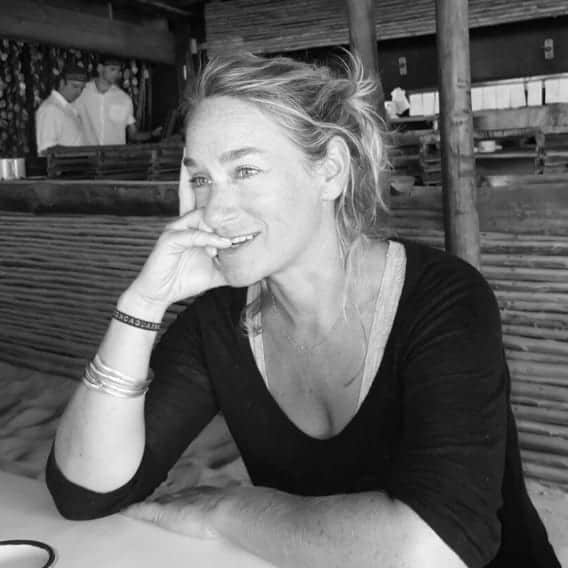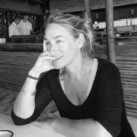
MysticMag chats with Dennis William Hauck, a respected author and researcher in consciousness studies, focusing on the transformation of consciousness and the subtle interactions between mind and matter, akin to the practices of alchemists. He sees alchemy, theurgy, and quantum physics as part of a broader science of consciousness and works to integrate various philosophical and scientific traditions. Hauck has translated medieval alchemy manuscripts and authored over twenty books, including “The Emerald Tablet: Alchemy for Personal Transformation” and “The Complete Idiot’s Guide to Alchemy.” His work has been featured in major publications and he has appeared on numerous radio and TV programs. He is the curator of the Rosicrucian Alchemy Museum and founding president of the International Alchemy Guild.
What initially drew you to the field of consciousness studies and alchemy, and how has your understanding of these subjects evolved over time?
I discovered alchemy while it was in graduate school at the University of Vienna. I was tired of the droll academic life that never came to any conclusions about what was important to me. I guess I was searching for meaning in my life. I was wondering through the library looking for some inspiration, when I found myself in the basement of the building. I passed by lots of cramped little rooms filled with books, when I found myself in a room of old, uncirculated alchemy books—leather and vellum-bound books dating back to the seventeenth century. They were written in the ornate German Fraktur type, which I found difficult to read. But the pictures were breathtaking. Hundreds of highly symbolic surrealistic drawings of dragons and otherworldly creatures, secret ciphers, and symbolic laboratory operations. There were even scenes of people’s heads or brains inside retorts, or people being pushed into furnaces or boiling vats with their thoughts rising up out of them in the fumes. It was obvious that alchemy was more than just pseudochemistry, more even than rudimentary psychology. It was the first discipline I ever found to combine science, philosophy, psychology, spirituality, and consciousness studies in the meaningful pursuit of what was real on all levels of reality. After that initial library experience, I spent most of my time in the library gallery translating old alchemy books. I was even able to find a practicing alchemist from nearby Prague who was willing to take me on as an apprentice.
Alchemy is often associated with mystical and esoteric practices. How do you reconcile the spiritual and philosophical aspects of alchemy with its practical applications in modern fields such as psychology, business, and science?
I have lectured or held workshops about alchemy with all these groups, and I find they have more in common than not. Like me in the Vienna library, they are all trying to find some sort of meaningful truth in the world. Magicians, mystics, philosophers, psychologists, religious leaders, businessmen, scholars, and scientists—aren’t they all searching for the same thing? That’s how I look at it. Whether you’re using rituals, prayer, algorithms, equations, models, or meditation—it’s all the same. You just have to adjust your language a bit to move amongst them. But I think there is a common oneness to all human pursuits.
In your book “The Monad Manifesto: Merging Science and Spirituality,” you discuss the concept of the Monad as the indivisible source that created our reality. How does this concept relate to current scientific theories and our understanding of the universe?
The Monad is the indivisible single source of reality. In mathematics, the Monad is defined as the zero-point origin of all numbers. For theologians, the Monad is the logos or Word of God. In philosophy, it’s the basic Substance at the root of both mind and matter. In science, it’s the Big Bang singularity from which the universe emerged.
Astrophysicists divide the birth of our universe into events similar to the levels of emanations in the Pythagorean and Hermetic models of the Monad. For instance, in the Hermetic model, the Monad projects the light of the logos, which contains all the information needed to create a universe. The light of the logos becomes the first stars, and finally manifests in the creation of the galaxies and planets. In modern cosmology, the monadic source or Singularity is the “Big Bang,” in which an infinitesimally small point of brilliant light appears out of nothing—so condensed that it exists in solid form about the size of a golf ball. Immediately, the light of the logos expands in all directions within the Hermetic Abyss (the Nothingness of space). But the Big Bang does not really expand “through” anything because there was no space at the beginning of time. The Big Bang created and stretched space itself, expanding the universe from the inside like a balloon.
These first few seconds of creation represent the level of the Monad in the Pythagorean system. In Hermetic philosophy, it is the One Mind outside the universe that originates from the highest dimensional Empyrean—or from the Atzmus in the Kabbalistic model. The defining event of the emergence of light into Nothingness can be compared to the power of the logos emerging from the Tenth Heaven (or First Cause) in the Hermetic model. In the Kabbalistic scheme, it is the logos lightning bolt from the Ein Sof striking Kether in the Tree of Life. During the initial period of inflation, photons of light create both particles and antiparticles of neutrinos, electrons, protons, and neutrons. In this dualistic cauldron of creation, only the unexplainable fact that there was about one extra matter neutrino created for every billion antimatter neutrinos keeps the early universe from disappearing into oblivion.
Then after only about 380,000 years, the initial light of the Big Bang begins to fade, and the next phase, known as the “Dark Ages,” begins. The universe goes completely dark and the temperature cools. Everything is dormant like an egg in a nest of Nothingness. This is the sealed cauldron of creation, the churning triad of energy, matter, and light that is the hidden source of physical reality. This is the Triad level of the Tetractys in the Pythagorean system, the level of the hidden Three Forces in Hermetic and Kabbalistic thought.
About 300 million years after the Big Bang, light returns, and the third phase begins with the formation of the first stars. Elementary particles have begun to condense into ions of hydrogen, which fuse into helium ions, and the first two elements are created. The process continues with the formation of stable, neutral atoms. The atoms cluster in protoclouds of primal matter which collapse under the influence of gravity to form the first stars. The brilliant light of the logos of the Big Bang is now dispersed among the stars. Stars begin to clump together in galaxies and the first planets appear. Thus, Nature is born from the logos. This final period of manifestation represents the level of the Tetrad in the Pythagorean model—the rendering of the Four Elements in the Firmament of Stars of the Hermetic Eighth Heaven. As the evolution of the universe continues, the archetypal planetary spheres of the next seven Heavens (or seven levels of sephirot on the Tree of Life) come into play.
You’ve mentioned that alchemical principles can be applied to personal transformation. Could you elaborate on some practical techniques or exercises that individuals can use to apply these principles in their own lives?
I tried to bring all these practical methods together in the second (2024) edition of my book In the Mind of the Universe: The Monad and You! The theme of that book is that the monadic state of consciousness is the Philosopher’s Stone of which the alchemists spoke—the ultimate knowledge of the universe. While the Monad itself is unknowable, you can become aware of it despite your daily activity if we take a moment to connect to it. Your personal Monad is the singularity in your own consciousness, the point of awareness from which you experience the world. You are conscious because the universe is conscious, and the commonplace experience of being a single point of awareness in your own mind—of living in your own little world—is a reflection of the Monad in you. Whatever the ultimate truth of the universe, that is not going to change. What changes is your piece of the puzzle—the singularity of consciousness in your personal space around which you build your entire life.
Accessing that personal Singularity (eternal essence or soul) within you is a three-stage process. First, you have to Disengage Physically—extricate yourself physically from the world and focus on your own inner space. You must find a quiet private area in which you can relax into your body and “just be.” You have to delink from all your devices and connections to the outside world. This is a crucial phase—you are only real in the world when you are fully relaxed. You have to learn to cultivate the silence around you—not fear it, not run from it, not fill it with noise and chatter in the illusion of being alive in the world. You are only part of the world when you are internally present and relaxed in your body.
Second, you have to Disengage Mentally, which means frankly—Stop Thinking! Cut off the stream of unexamined consciousness that keeps you connected to the everyday world. Shut down the Monkey Brain–the endless cascade of ambition, worries, jealousy, anger, lust, and all the countless other bits of nonsense that pollute our consciousness. This is not living. Give yourself the chance to experience Pure Consciousness—just pure awareness without a subject or object in mind. This whole process of disengagement and focusing on essences is the first work in alchemy (whether psychologically, spiritually, or physically in laboratory experiments) in which the purifying operations of Calcination, Dissolution, and Separation apply.
The final step is the Monadic State of Consciousness. At this highest level of the work to create the Philosopher’s Stone, you have the opportunity to become Something Else, something unexpected and supreme in your life. In simplest terms, it is transcending your ego and becoming part of the One Mind of the universe, of joining the Unus Mundus—the One World of the whole cosmos. There, you exist beyond thoughts in a state of pure Being—the “I am that I am” experience reported so often by experiencers. Alchemically, it requires Conjunction, the horizontal integration of the masculine and feminine parts of your soul. This is followed by the Fermentation stage of vertical union of Above (superconscious) and Below (subconscious) forces that results in the final Coagulation of spirit and matter in a new, lasting incarnation. Psychologically, this is a new integrated personality, but the alchemists saw it as a new body entirely—the Astral (“of the stars”) body of light.
Alchemy has influenced various aspects of society, including art, literature, and medicine. How do you see the continued relevance of alchemical principles in shaping our understanding of these fields in the future?
Alchemy is a Perennial Philosophy that keeps resurfacing in different forms down through history and will never go away. Its principles will continue to show up in all human endeavors, because as Carl Jung showed, alchemy’s archetypal operations are fundamental to human consciousness. But such perfection takes time; the universe is struggling to find meaning in itself, and we are that self-aware part of the universe. I’ve been working for nearly 40 years to alchemize people and institutions in literally hundreds of media appearances, books, articles, lectures, and workshops. Once you’ve seen the monadic light, there is simply no turning back. Despite all the corruption, confusion, hatred, selfishness, and ignorance in the world—there is no turning away from the alchemical vision of human perfection. That is the Great Work of alchemy.
If you would like to find out more about Dennis William Hauck, please visit https://dwhauck.com/



